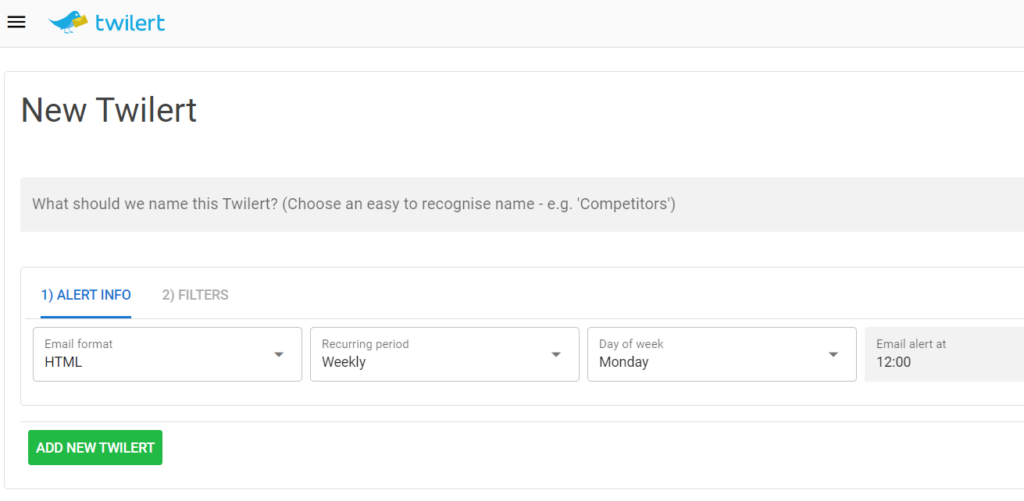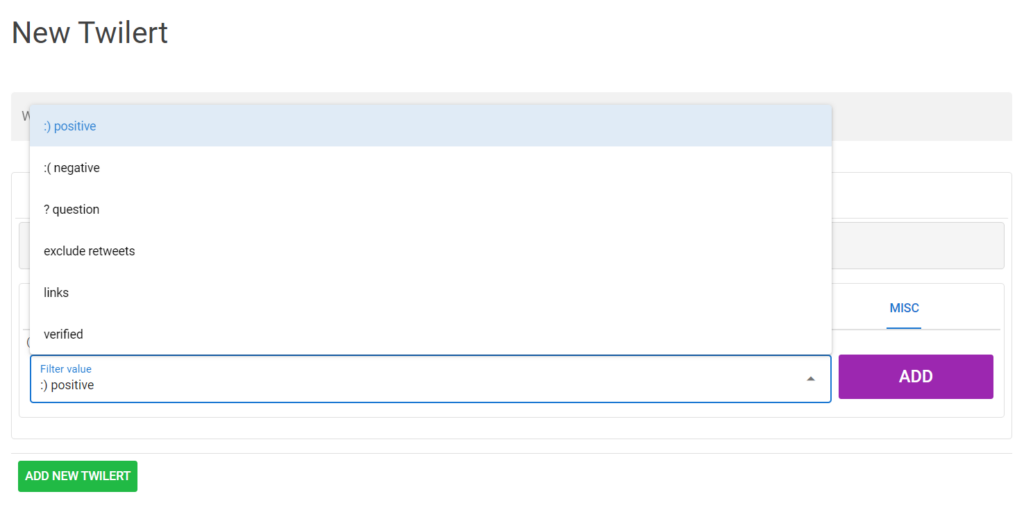Wondering how people feel about a brand on Twitter? Monitoring the sentiment of tweets in real time provides valuable insights into public opinions on a brand, product, or service. No coding skills are required to accomplish this.
This post explains how to use an X sentiment analysis tool to get instant feedback on the overall mood of Twitter users.
What is Twitter Sentiment Analysis?
Twitter sentiment analysis, often referred to as opinion mining, involves identifying the emotional tone of tweets and classifying them as positive, negative, or neutral. This process offers valuable insights into public perception of various topics, events, or brands, making it a useful resource for both individuals and businesses.
Manually analyzing sentiment requires reviewing each tweet individually, which is time-consuming. However, specialized tools now automate this process by examining the language and context within tweets, providing a more efficient and accurate way to gauge public opinion on X.
Why Twitter Sentiment Analysis is Important?
X sentiment analysis is a valuable tool for understanding public opinion on specific topics. By tracking positive, negative, and neutral tweets, it provides a clear picture of how a target audience feels about a subject.
This analysis helps with several key tasks, including:
- Monitoring and managing brand reputation;
- Identifying and addressing potential PR crises early;
- Gaining deeper insights into customer preferences;
- Tracking customer satisfaction levels;
- Uncovering competitor feedback;
- Predicting trends within a business niche;
- Discovering popular X hashtags.
Sentiment analysis also supports informed decision-making in areas such as marketing campaigns, product development, and business strategy.
For businesses engaging in Twitter B2B marketing, sentiment analysis is a powerful tool that can offer deeper insights into how industry peers, clients, and competitors perceive a brand, providing valuable data to enhance marketing strategies and business decision-making.
How Can You Understand Customer Sentiment Through Media
As marketers, we often assume we understand what our customers are thinking and feeling. But do we truly know? A great example is how Expedia Canada used sentiment analysis to quickly and creatively respond to an ad mistake that involved a highly criticized ‘annoying violin sound’ on Twitter. Without analyzing the customer sentiment expressed in those tweets, they might have continued believing the sound was a good idea.
Studies analyzing sentiment from tweets during the presidential election between Hillary Clinton and Donald Trump revealed more accurate predictions of the final results than traditional polls that directly asked people. Monkeylearn’s research found that Trump was mentioned almost twice as much as Clinton and had a higher positive-to-negative sentiment ratio.
These sentiment shifts could be traced to specific events during the election. For instance, when the FBI decided not to recommend prosecution in Hillary’s email case, negative sentiment surged on Twitter.
This example shows how sentiment analysis can be a strong indicator of early successes and failures, as well as the public’s general mood about a specific topic. Polls sometimes lead to respondents giving expected or socially acceptable answers, but tracking sentiment gives marketers a clearer view of how people truly feel.
Why Use X Sentiment Analysis Tools?
Twitter sentiment analysis tools offer a powerful way to understand public opinions on various topics, events, or brands. Given Twitter’s status as a major social platform, it provides valuable, often candid feedback due to the anonymity users can maintain.
These tools have become increasingly precise in identifying the sentiment behind tweets, which is why they are gaining widespread use. They have diverse applications across multiple sectors:
Business
Companies utilize sentiment analysis to gauge customer feedback on products, services, and marketing campaigns. It’s even used to predict market trends, including stock performance.

Public Reactions
This technology helps assess reactions to cultural phenomena, including product launches, popular TV shows, or high-profile events like the Oscars.

These tools are becoming indispensable for businesses and organizations aiming to efficiently interpret and act on public sentiment.
How to do Twitter sentiment analysis?
There are two primary approaches to performing X sentiment analysis:
- Manual Analysis: This approach involves manually reviewing tweets to classify them as positive, negative, or neutral. While this method allows for a detailed, human interpretation of content, it’s highly inefficient for analyzing large volumes of data. The time and effort required make it impractical for organizations to handle thousands of daily mentions;
- Automated Tools: Automated sentiment analysis tools use advanced algorithms to assess the emotional tone within tweets by collecting and analyzing the data in real time. These tools are far more efficient than manual methods, offering faster, more accurate results, and significantly reducing the risk of human error.
Beyond X, many of these tools extend their functionality to other social media platforms like Facebook and Instagram, making them ideal for comprehensive sentiment tracking across multiple channels. This cross-platform capability allows businesses to monitor public opinion holistically, ensuring they stay on top of customer feedback, brand perception, and emerging trends on a broader scale.
For instance, in this interaction, a customer inquired about a product’s availability on ASOS, and the brand responded promptly with relevant information. These tools can be used to detect both positive and negative sentiment, helping companies gain insights into customer preferences and areas that may need attention. When businesses analyze customer expressions and tone, they gain a clearer understanding of customer expectations. This helps improve brand image and strengthens communication strategies across platforms like Twitter, Instagram, and Facebook—an approach especially valuable for AliExpress Dropshipping ventures.

By using tools like Twilert, you can further refine the process by searching for positive or negative tweets directly with specific search operators, streamlining sentiment detection even more efficiently.
On Twilert and through Twitter search, tweets expressing positive or negative sentiment can be identified using specific search operators, indicating satisfaction or dissatisfaction. This simple search method not only provides insights into brand perception and areas needing improvement but also helps discover the topics, competitors, and services that customers favor or dislike.
Different variations of these symbols are also recognized, which is particularly helpful considering the frequent use of such emoticons across social media platforms.
Using Sentiment Analysis with Twilert
Using sentiment analysis with Twilert is straightforward. After logging into your account (or setting up a free trial at www.twilert.com), access the search panel.

In the dropdown under “misc,” you can select sentiment options, such as “positive” or “negative,” to filter X results accordingly.

For a more refined search, Twilert offers advanced search operators. For example, by combining an exact phrase like “phone provider” with a negative sentiment filter, you can easily locate tweets expressing dissatisfaction related to that term.

X search can be a powerful tool for uncovering valuable insights. Sentiment search, when used with the right terms and formats, can reveal key details about competitors, dissatisfied customers, and opportunities to boost positive feedback for your business. Here are some important searches:
Brand Search
To see what people are saying about your brand, use your brand handle along with a sentiment operator. Including the “OR” operator ensures you capture all relevant mentions. For example, the following search finds tweets mentioning “Pepsi” or @Pepsi with positive or negative sentiment:
pepsi OR @pepsi 🙂 OR 🙁
Competitor Search
For industry insights, use the negative sentiment operator along with a competitor’s handle. This reveals tweets from unhappy customers, giving you the opportunity to understand their pain points and potentially connect with those customers.
Customer Search
To find potential customers, search for common phrases they might use when expressing a need for your product. For instance, searching “wish there was” 🙁 followed by a relevant product keyword can help you identify potential customers who are unaware of your business.
These search techniques provide a strategic edge in monitoring sentiment and discovering opportunities on Twitter.
Turning Sentiment Analysis Insights into Action
Once you’ve gathered sentiment analysis data from Twitter, it’s essential to apply actionable strategies derived from these insights. Below are some effective methods to utilize the information:
Address Negative Feedback
Negative tweets can damage your brand’s reputation and affect your business. It’s crucial to respond quickly to unhappy customers, showing them that their concerns are acknowledged and important.
Handling negative feedback promptly helps protect your brand’s reputation and reduce potential business impact. Taking a proactive approach by addressing customer complaints demonstrates a commitment to resolving issues effectively.
For example, in a Twitter post, an HP customer expressed frustration over poor service and delays. HP Support responded directly, acknowledged the issue, and asked for additional details via direct message to resolve the matter. This type of response shows attentiveness and a commitment to resolving customer problems efficiently.

Many social media monitoring tools, such as Twilert, have alert features that notify you of rapid increases in negative mentions, helping you take timely action.
Identify Positive Drivers
Observing positive tweets about your brand provides valuable insights into what captures your audience’s attention and interest. By monitoring this activity, you can pinpoint the content and messaging that generates positive feedback. This information can be used to shape future marketing efforts and refine customer service strategies.

Identifying positive drivers is essential for understanding what captures your audience’s attention and interest. For example, in the post above, a customer shared their excitement about finding a unique mug at Walmart. Walmart responded enthusiastically, recognizing the positive sentiment.
Monitoring such interactions helps brands identify which content attracts and engages customers, enabling them to adjust their marketing strategies and customer service efforts based on the positive feedback received.
Prioritize Areas for Improvement
Sentiment analysis data can help you identify recurring issues that need attention. For instance, if customers frequently mention delays in shipping, this should be prioritized for improvement before tackling other concerns.
For instance, a customer expressed frustration with a delayed AliExpress order, noting difficulties in locating the package. AliExpress responded by acknowledging the issue and reassuring the customer that their concerns were being taken seriously.

Addressing such complaints should be prioritized to improve customer satisfaction and ensure smoother operations. Focusing on key problems allows for better resource allocation and a more efficient response to customer issues.
Track Emerging Trends
By regularly analyzing sentiment data, you can stay updated on shifting trends and popular hashtags in customer conversations. Recognizing these changes early enables your brand to adapt quickly, ensuring customer satisfaction and keeping your business relevant in a competitive market.
Acting on these insights helps your brand stay responsive to customer demands while safeguarding its positive reputation.
Final Thoughts
Incorporating Twitter sentiment analysis into your brand’s strategy is crucial for gaining real-time insights into customer feedback, monitoring public opinion, and staying ahead of competitors. By automating the process with specialized tools, brands can efficiently track the tone of tweets. These insights help businesses address negative feedback promptly, understand what engages their audience, and identify areas for improvement.
Additionally, sentiment analysis supports informed decision-making in marketing, product development, and customer service strategies. Tracking emerging trends over time ensures that your brand remains responsive to shifting customer preferences and continues to deliver relevant, high-quality experiences that strengthen brand reputation.

